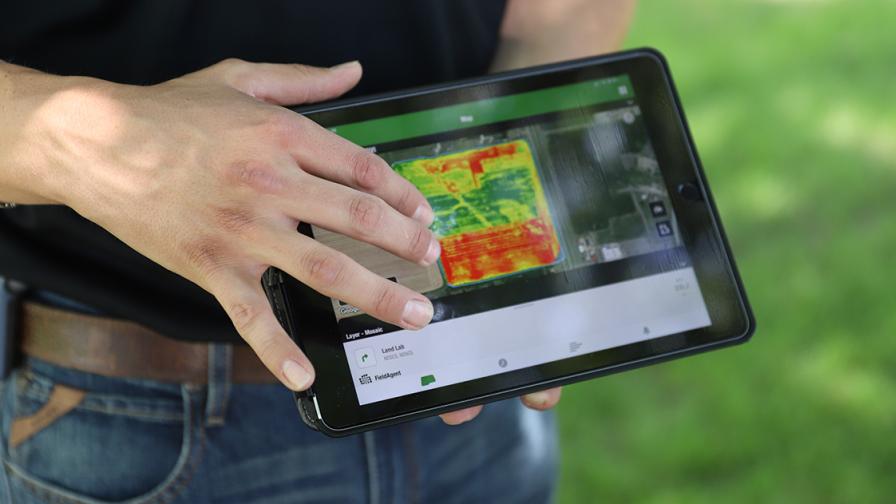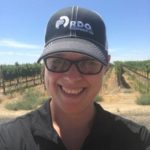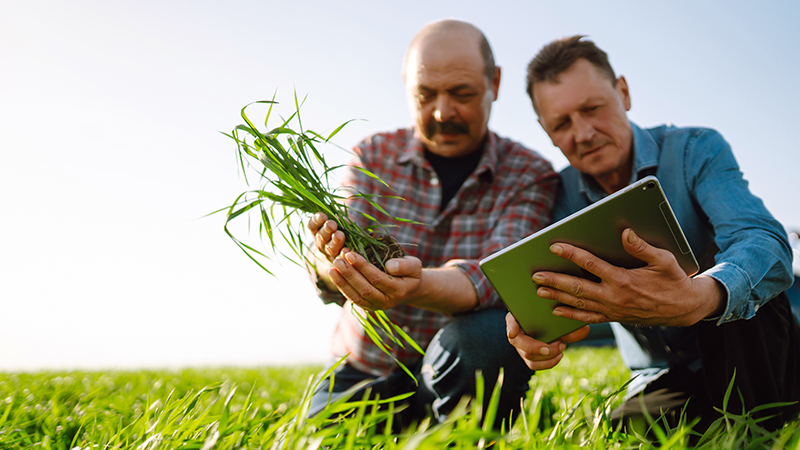10 Technology Tools for an Easier, More Accurate GLOBALG.A.P. Audit

With the rising popularity of GLOBALG.A.P. certification, there’s more need for trusted advisors to help growers achieve this designation.

In just two decades, Global Good Agricultural Practices (GLOBALG.A.P.) has grown from a retailer-driven initiative to the world’s leading farm assurance program. Today, GLOBALG.A.P. codes, programs, and standards continue to exist because of growing, worldwide concerns about food quality and safety.
GLOBALG.A.P. Certification
One of the program’s hallmarks is the GLOBALG.A.P. certification, an opportunity for growers to demonstrate, to retailers and buyers, their commitment to advancing good agricultural practices. According to the Food and Agriculture Organization, GLOBALG.A.P. certification is becoming an international standard for fresh foods and growers who market their crops to a global audience.
With the rising popularity of GLOBALG.A.P. certification, there’s more need for trusted advisors to help growers achieve this designation – but not necessarily through recommending certain best practices (though that’s certainly something we should offer our grower partners). The area that trusted advisors can bring value to growers is in the simple documentation of those agricultural practices, required to obtain the certification…or should I say, not-so-simple documentation.
Streamlining the Process
The reporting paperwork required to achieve GLOBALG.A.P. certification is, to put it bluntly, daunting. However, technology offers hope and opportunity, both in fulfilling the requirements needed to obtain certification, as well as streamlining time spent on documenting and showing those activities.
Manual record-keeping of agricultural practices is common, especially in industries where mechanization is still catching on, like orchards and vineyards. But technology presents the greatest opportunity to easily and accurately document many agriculture practices that are required for GLOBALG.A.P. audits.
Here are 10 technology solutions that can reduce time spent monitoring, documenting, and reporting on farm operations throughout the growing year. While most growers likely already use some of these solutions, others will find these to be eye-opening and a new opportunity, hopefully, worth considering.
Technology 1: Farm Management Information Systems (FMIS)
All the technology and data collection tools in the world don’t matter if there’s not a central “hub” where all information and data is being captured, stored, and organized for easy reporting. This is why a FMIS operations management system, like the John Deere Operations Center, must be used to create that singular place to manage all operational records.
While any system can be used, per grower preference, I strongly recommend choosing one that has an automated cloud backup system, as it will offer protection against document loss due to natural disasters, human error, or nefarious actions.
When all technology tools are connected to an operations management system, manual logging and notetaking are no longer needed, and all reporting can be done via easy downloads and spreadsheets vs. manually.
Technology 2: Geographic Information System (GIS)
Thanks to the accuracy it provides, GIS will help in reporting. When it comes to GLOBALG.A.P. certification, it’s a good solution to fulfill two of the most basic requirements: having an accurate field map and naming each field.
Technology 3: In-Cab Displays
While it might sound strange, there are growers who use in-cab displays but don’t connect them to GIS. So, while they have the ability to collect data for GLOBALG.A.P. requirements, they’re only a valuable, time-saving tool for reporting if that data is feeding into a system where it can be accessed.
These first three technologies discussed are relatively inexpensive and are key building blocks in standardizing and retention of information, both in the geolocation of operations as well as temporal (or time) variability of a field management system.
Technology 4: Module Telematics Gateway Systems
Telematics systems are designed to remotely connect owners and managers to their equipment, providing alerts and machine information including location, utilization, performance, and maintenance. This data can be used to best manage how and where equipment is used, and track important equipment info like emissions and idle times, all part of GLOBALG.A.P. requirements.
For example, growers must prove they have handwashing or restroom stations available to workers to ensure cleanliness and prevent the spread of harmful bacteria, like E. coli. Telematics devices can prove the location of these stations and that they’re in reasonable proximity to all staff.
Another example of where location matters is when pesticides and cross-contamination could exist. Geofencing can be set up on sprayers to prevent them from going into an area where the applied material would not be appropriate, and, again, prove this compliance.
There’s good news for operations that don’t currently have MTG systems factory-installed on existing equipment: most machines can be upgraded with aftermarket systems, so growers don’t need to invest in new machines to have access to this technology.
Technology 5: Rate Control Systems
A large portion of GLOBALG.A.P. documentation requirements speak to application – specifically, dates, geolocation, trade names, and quantities. While most growers have an application plan and strategy, rate control systems are the next step in managing inputs and developing real-time documentation.
Like MTG, these systems can be installed on existing, older equipment.
Technology 6 and 7: Guidance Control and Section Control
Another set of solutions that go hand-in-hand, GPS guidance and section control offer more than a better in-cab experience, they can be a way of showing due diligence for several of the lesser-discussed, yet still important, sections of GLOBALG.A.P. requirements.
The majority of GLOBALG.A.P. requirements go back to application management, rates, and timing, which is where section control can be handy. And where GPS guidance and section control really shine is their use in reducing inadvertent movement of products offsite or to more sensitive areas. By using automated shutoff systems, growers can reduce – and prove their reduction – of offsite drift, over-application, and double-coverage.
Technology 8: Soil Moisture Monitoring Systems
Specific to requirements that show water use management and both manure and non-manure source nutrient management, growers can look to soil probe systems, including both neutron probes and soil moisture probes.
These systems can help document input use and plant uptake, while being mindful of the decisions behind water and nutrient management strategies.
Technology 9: Tender Mixing Systems or Stations
A majority of GLOBALG.A.P. protocols are around pesticide containment, handling, and management. While one of the most expensive options, tender mixing systems also may be one of the most innovative and vital tools when it comes to application safety and health of those applicating.
Tender mixing systems create a log of every batch loaded. Not only does the system eliminate math and calculation errors that can occur when mixing, growers can easily produce a log file to prove this area of compliance.
These self-contained systems also show a grower’s due diligence in avoiding worker exposure to pesticides.
Finally, proper handling and disposal of hazardous material is another requirement. Because these systems mix only the amount that’s needed for the job, the grower can prove there was no excess material, thus no improper handling or disposal concerns.
Technology 10: Apps
There’s an app for that – how many times have we heard this? Applications have become part of our everyday lives. Apps are used to check bank statements, order groceries, and about anything to provide added convenience. And apps can also be a great way to store and use information – especially true when the app links to a grower’s operations management system.
Apps can be used for everything from scouting fields to tracking weather. With the ability to conveniently collect data and tie that data into an operations management system, they provide one more tool for the reporting toolbox.
Check out this recent article to learn more about some of the best agriculture apps of the year.
Creating a consistent plan with consistent data management for growers is the first step in making GLOBALG.A.P. reporting easier, faster, and more consistent from year to year. Consider using a combination or all of these available technology tools to streamline the process to its fullest potential.






